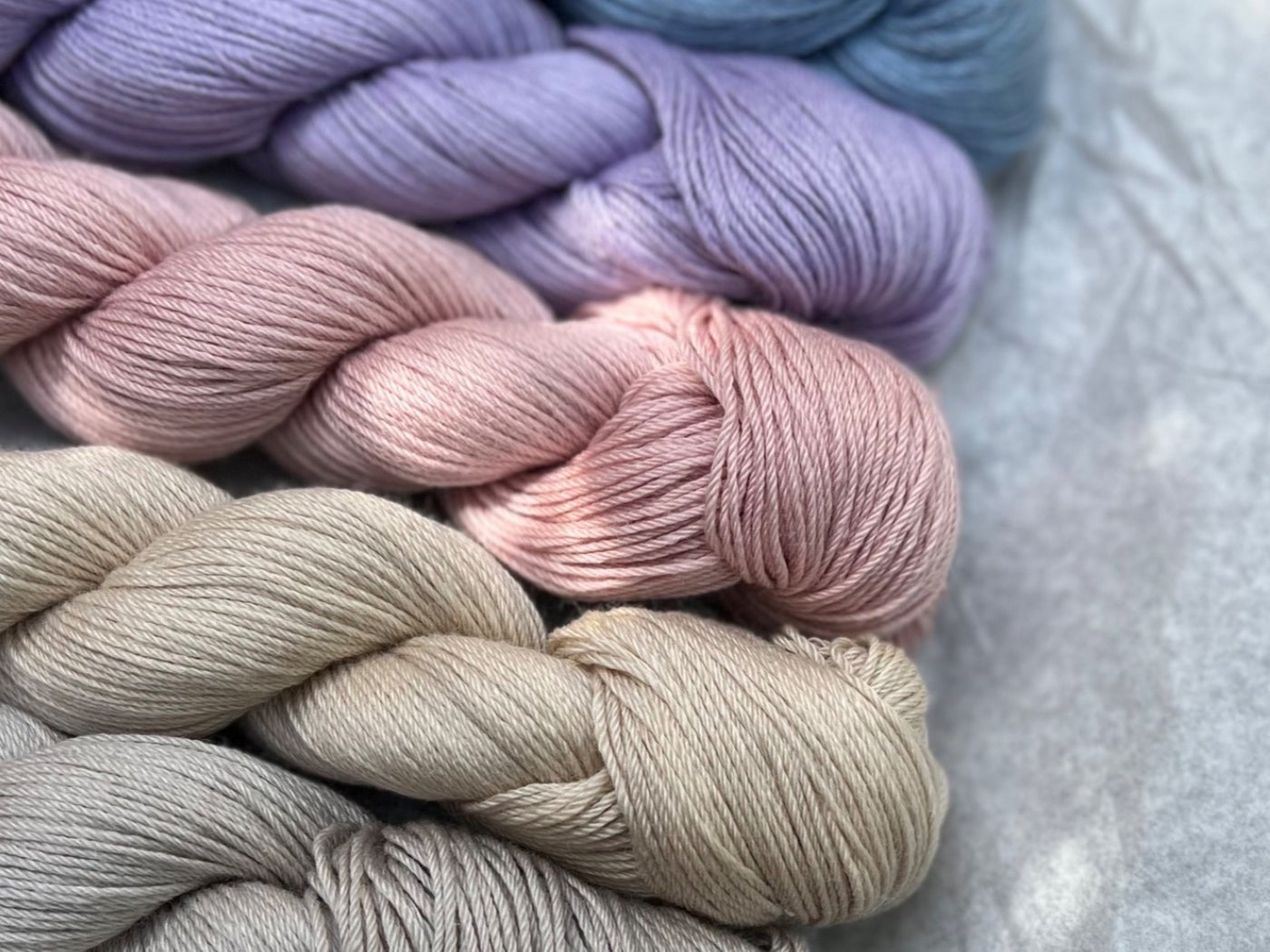By Claudia Ostrop
Well, who has this happened to? You discover a great knitting design on the internet and then realize that the instructions are only available in English. For many knitters, the fun is over and the project is over before you even start it. But are English instructions really that bad?
We say no and explain in the following blog post how you can help yourself if the desired instructions are only available in English.
Knitting according to English instructions
Is your school English rusty or never really great? Or don't you speak English at all? No problem, English knitting instructions can be done really well with a little preparation. Promised! And the nice thing is: once you've knitted your first English instructions, all the others are (almost) child's play.
Find a starter project
If you want to knit according to English instructions without being proficient in (knitting) English, it is best to choose a model that is not too complicated to start with. To be honest, a shawl or scarf or a simple sweater are better suited to getting started than complicated designs with lots of bells and whistles.
Instructions that are available in both English and German are really suitable for practicing - you practically have the German version as a net and double bottom. But don't cheat: only look at the German instructions if there is no other option.
Have you found instructions? Then it can go!
Step by step – preparation is half the battle
First, print out the instructions. Even if you usually knit directly from your laptop or tablet: for your first attempts at knitting in a foreign language, notes on the instructions are worth their weight in gold.
So you have a pencil, highlighter and (online) dictionary ready.
Check out the instructions. What is important and what can be ignored? Most instructions have a short profile of the respective model. Certainly interesting, but not absolutely necessary, especially if you are not confident in the language.
To know which passages are important, here are a few words to look for as you begin your English knitting journey. And also a few translations of the most important and most common terms.
Yarn – Yarn: Which yarn in which thickness is needed. In most instructions you will find information about the yarn thickness/yardage in yards (yds) and meters. If you don't want to use the original yarn, the Internet can help, for example the YarnSub site. By the way, balls, skeins and hanks refer to balls and strands.
Needles : Circular needles are circular knitting needles, DPNs refer to a set of needles. Depending on which country the instructions come from, the needle sizes may only be given in US sizes. The Internet also helps here; for example, you can enter “needle size US mm” as a search term and you will immediately receive numerous conversion tables. Or you can use our practical counting frame, which is also a needle measure and indicates the sizes in mm and US thicknesses.
Material, notions – Other accessories: Here is a list of what else you need apart from yarn and knitting needles. Stitch markers are stitch markers, a yarn holder is a stitch holder, waste yarn fulfills the same function. Sometimes you also need a crochet hook.
Sizes: The bust circumference is usually given here as a reference. If only in (ch) dimensions are given, simply use an online converter or do the calculation yourself: 1 inch (1”) is 2.54 cm.
Instructions : This is where the actual instructions begin. Isn't it there? Then look for the word cast on or the abbreviation CO. At this point the stitch cast-on starts!
But before you pick up the needles, look for another section: the list of abbreviations, the abbreviations. They are the key to your knitting success, because this is where the letter and number combinations reveal themselves, which will lead you from the stitch cast-on to the finished knitted piece.
You can find numerous sites on the Internet that break down the abbreviations for you. For example, enter “knitting dictionary English German” into the search engine and you will have what you need. Our advice: Take the time to go through the list of abbreviations in your instructions from start to finish and write the respective German abbreviation or explanation directly to the English term (hence the tip to print out the instructions). Then you don't have to look it up again and again later. If the German translation of an English abbreviation doesn't help, we recommend YouTube. Simply enter the (English) abbreviation of the knitting term and you will almost always see more relevant videos than you actually need. Always good: Pascuali's tutorials!
Here are a few words of knitting English that you will definitely come across in almost all instructions:
Knit – that’s the word for knitting in general. However, in instructions, knit means knitting right stitches. It is abbreviated with a k. K1 or k1 means knit 1 = knit 1 stitch.
Purl – knit purl. Abbreviated with a p/P and then the number of stitches that are knitted on the left. p5 – knit 5 purl stitches.
CO, cast on – cast on stitches or cast on stitches, and accordingly BO, bind off – cast off stitches
Increase, abbreviated inc – increase stitches, and correspondingly decrease, dec – decrease stitches.
Stitches , abbreviated sts , are the stitches that occur both in row(s) , the rows, and in round(s) , the rounds. The latter are usually abbreviated as rnd(s) .
Stockinette stitch or stocking stitch are the terms for stocking stitch, garter stitch means knitting in garter stitch.
Other vocabulary you might come across include yoke , body and sleeves , as well as neck and neckline . By the way, neck is not just the neck but the entire neck. The neckline is the (neck) neckline.
On your marks, get set, go!
Have you familiarized yourself with the instructions, translated the abbreviations and made appropriate notes? Maybe you can now use the highlighter to mark all the information that applies to your size. If you are a little unsure about the “foreign” instructions, it is helpful to see at a glance what number of stitches or repetitions are recommended for your own size.
As I said, now search for cast on or CO , that's where it starts and the fun can begin!
Depending on what you are knitting, the first terms that you may not know will appear here. Maybe a join to work in rounds or the longtail cast-on – look it up (online) and make a note of these words. This way you can create your own list that you can refer to later.
The nice thing about English instructions is that there is usually very little written out text. Most of it is presented using abbreviations and numbers in combination. Practical like formulas that lead to the finished knitted piece.
p1, k1 to end – purl 1, knit 1 to the end. A 1x1 rib cuff looks so easy.
Knitting in a “foreign” way – not so bad
What may seem impossible at first glance because you speak little or no English quickly becomes less scary when you roll up your sleeves and pick up English instructions. It takes a bit of preparation, especially the first time. But remember the tip from above again: When practicing, take instructions for which there is also a German translation. This way you can quickly have reinsurance ready. Most of our instructions are available in German and English: Maybe you will find the perfect English knitting practice section and more in the Pascuali Collezioni magazines?
We hope that we were able to take away some of your fear of English instructions. If you dare to leave the comfort zone of your native language, your knitting horizons suddenly expand immensely. And in principle you can use the approach described here to tackle instructions in all possible languages - how about that?




